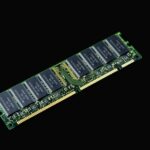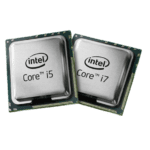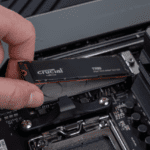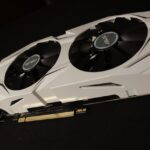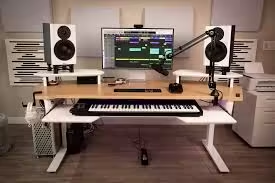
5 Best Guide on: How To Build A Music Production PC
How To Build A Music Production PC: is a crucial step in Creating a custom music production PC that lets you design a system to fit your specific creative demands. Whether you’re just starting out or are an experienced professional, a custom-built PC offers the performance and dependability necessary to realize your musical ideas. This guide will take you through each stage of the process, from determining your needs to building the ideal machine.
Imagine embarking on a thrilling adventure where you are the architect of your own musical realm. Have you ever dreamed of having a studio that responds to your every creative whim? Building a music production PC isn’t just assembling parts; it’s crafting the ultimate instrument tailored to your artistic vision.
Whether you’re a novice setting sail for the first time or a seasoned captain charting new territories, a custom-built PC is your steadfast vessel. It’s designed to weather any storm and carry you to the shores of your musical dreams with precision and reliability.

Why settle for off-the-shelf solutions that might not meet your needs? Why not sculpt a masterpiece that works as seamlessly as a well-conducted symphony? This journey isn’t just about putting components together; it’s about weaving a tapestry of technology that sings in harmony with your creativity.
Think of the process as cooking a gourmet meal. You start with the finest ingredients—each part of your PC handpicked for its quality and compatibility. Just as a chef knows the perfect balance of flavors, you’ll learn the ideal combination of components to create a machine that delivers unparalleled performance. Your motherboard is the kitchen where all elements come together, the processor is your master chef, swiftly and efficiently managing every task, while your RAM acts as the sous chef, keeping everything running smoothly.
This guide is your trusted recipe book, leading you through each stage from selecting the best ingredients to the final assembly of your culinary masterpiece. It will help you decipher the technical jargon, choose the right tools, and avoid common pitfalls, ensuring your creation is nothing short of spectacular.
So, are you ready to embark on this exciting journey? Are you prepared to turn your vision into reality and how to build a music production PC that will stand as a testament to your dedication and passion? Let’s dive in and start crafting the ultimate machine that will bring your musical fantasies to life.
Why Build a Music Production PC?
Creating music on a PC opens up a world of unparalleled flexibility and power, allowing you to harness cutting-edge technology to fuel your creative journey. Imagine having a tool that’s been fine-tuned to meet every unique demand of audio processing—a realm where precision and performance are paramount. This is where a custom-built music production PC shines, meticulously optimized for the intricate and resource-intensive tasks that come with producing high-quality audio in your home studio.

Off-the-shelf PCs often fall short in this regard. While they may handle everyday tasks with ease, they typically lack the specialized specifications required for serious music production.
These pre-assembled systems frequently include components that are either unnecessary or inadequate for your specific needs. For instance, a standard commercial PC might prioritize features like gaming graphics or general multitasking capabilities, which do not translate into efficient audio processing.
This mismatch can lead to frustrating limitations, such as latency issues or insufficient processing power when running complex audio software and plug-ins.
Moreover, purchasing a ready-made PC means paying for elements that add no value to your music production process, making them less cost-effective. These unnecessary components not only inflate the price but also occupy valuable system resources that could be better allocated.
This is akin to buying a high-performance sports car when all you need is a vehicle tailored for off-road adventures; both are impressive in their own right, but only one fits the specific demands of the journey you’re undertaking.

Building your own music production PC, on the other hand, is like being a master craftsman with full control over your tools. You get to handpick every component, ensuring each part serves a purpose in your creative workflow. From the processor that handles your demanding software to the RAM that keeps your system running smoothly under heavy loads, each piece is chosen for optimal performance. This tailored approach ensures that your PC is not just powerful, but perfectly aligned with the needs of audio production.
This customization extends beyond just performance. It’s about creating a seamless, efficient environment that enhances your creative process. By selecting high-quality, compatible components, you ensure that your system is robust and reliable, minimizing downtime and technical hiccups. The end result is a machine that’s not just a tool, but a reliable partner in your creative endeavors.
In conclusion, building your own music production PC is an investment in your craft. It provides the flexibility, power, and efficiency that off-the-shelf systems simply cannot match. By taking control of the building process, you ensure that every dollar spent contributes directly to enhancing your music production capabilities. So, embark on this journey with confidence, knowing that the perfect tool for your artistry is within your reach, crafted by your own hands.
Benefits of a Custom Music Production PC
A custom PC offers several benefits:
Understanding Your Music Production Needs
Before diving into the build, assess your production needs. Consider the following:
Software: First, let’s delve into the world of DAWs, the software heart of your music production environment. Popular choices like Ableton Live, FL Studio, Pro Tools, Logic Pro X, Cubase, and Studio One each offer unique features and workflows tailored to different types of music production.
For instance, Ableton Live is renowned for its intuitive interface and powerful tools for live performance and electronic music production. Its session view allows for spontaneous composition and improvisation, making it a favorite among electronic musicians and DJs. Next, consider the plugins you’ll integrate with your DAW.
Plugins can significantly expand the capabilities of your DAW, offering everything from virtual instruments to advanced audio effects. For virtual instruments, Native Instruments’ Komplete suite is a comprehensive collection that includes everything from realistic orchestral instruments to cutting-edge synthesizers.
Spectrasonics’ Omnisphere is another powerful tool, known for its vast library of sounds and deep synthesis capabilities, ideal for sound designers and composers looking for unique textures and atmospheres.
Projects: When embarking on the journey of building a custom music production PC, it is essential to thoroughly consider the complexity and size of your typical projects. This factor is paramount, as it directly influences the hardware specifications and capabilities required to handle your creative workload efficiently.
Understanding the demands of your projects ensures that your custom-built PC will not only meet but exceed your expectations, providing a seamless and productive music production experience. To begin with, let’s define what we mean by the complexity and size of a project in the context of music production.
Complexity refers to the intricacy and detail involved in your music creation process. This includes the number of tracks you typically work with, the variety of instruments and samples you incorporate, the extent of audio processing and effects applied, and the level of automation and modulation used.
A complex project might involve multiple layers of audio recordings, sophisticated MIDI arrangements, and extensive use of virtual instruments and effects plugins, all of which demand significant processing power and memory.
Future Proofing: When embarking on the journey of building a custom music production PC, it is crucial to not only consider your current requirements but also anticipate your future needs to ensure the longevity of your investment. This forward-thinking approach will help you create a system that can evolve alongside your growing ambitions and technological advancements in the music production industry.
First and foremost, let’s explore what it means to anticipate future needs in the context of music production. The world of music technology is ever-evolving, with new software updates, plugins, and hardware advancements emerging regularly. By planning ahead, you can avoid the hassle and expense of frequent upgrades or replacements, ensuring your PC remains relevant and powerful for years to come.
One of the key components to consider is the central processing unit (CPU). Currently, you might find that a high-performance CPU like the Intel i7 or AMD Ryzen 7 meets your needs.
However, as software becomes more sophisticated and resource-intensive, a more powerful processor, such as the Intel i9 or AMD Ryzen 9, might be necessary to keep up with future demands. Investing in a top-tier CPU from the outset can provide a solid foundation for handling increasingly complex projects and advanced plugins without compromising performance.
Understanding these factors will help you choose the right components.
Budget Considerations for Your Music Production PC

Your budget will influence every aspect of your build. Plan to allocate your funds strategically:
balancing your budget is crucial to ensuring you get the best performance without overspending. This careful financial planning is essential to maximize the value of your investment, ensuring that every dollar spent contributes directly to enhancing your music production capabilities.
Balancing your budget starts with understanding your specific needs and priorities. Consider the nature of your music production projects and the tools you require. Are you a beat maker working primarily with MIDI and virtual instruments, or are you an audio engineer handling complex recordings with multiple tracks and high-resolution audio files? Identifying these needs will help you allocate your budget effectively, focusing on components that will provide the most significant performance gains.
Begin by prioritizing the core components that have the most substantial impact on your system’s performance: the CPU, RAM, and storage. The CPU is the heart of your music production PC, responsible for processing all the tasks and operations. Investing in a high-performance processor, such as an Intel i7 or i9, or an AMD Ryzen 7 or 9, ensures that your system can handle demanding audio processing tasks and run multiple plugins simultaneously without lag.
Choosing the Right Components
Selecting the Best CPU for Music Production

The central processing unit (CPU) is unequivocally the heart of your PC, playing a crucial role in handling the myriad audio processing tasks that define the music production process. Its importance cannot be overstated, as the CPU directly impacts the efficiency, speed, and overall performance of your entire system, making it a critical component in your custom-built music production PC.
When you dive into music production, the CPU’s responsibilities become immediately apparent. It manages the digital audio workstation (DAW) software, which is the core of your production environment, ensuring that it runs smoothly and efficiently. The CPU processes all real-time audio effects, manages virtual instruments, and handles the playback and recording of multiple audio tracks. Each of these tasks requires significant computational power, especially as the complexity and size of your projects grow.
Imagine working on a project with dozens of tracks, each loaded with multiple plugins such as reverbs, compressors, equalizers, and virtual instruments. The CPU is tasked with processing all these elements simultaneously, ensuring that there is no latency or glitching in the audio output. This requires a processor with a high number of cores and threads, as well as a high clock speed to manage the data throughput effectively. For instance, a powerful multi-core CPU like the Intel Core i9 or AMD Ryzen 9 can handle such intensive tasks with ease, providing a seamless and efficient workflow.

It also influences your system’s ability to expand and adapt to future needs. As software updates and new plugins are released, they often come with increased demands on processing power. Investing in a high-performance CPU from the outset ensures that your system remains capable of handling these advancements without requiring immediate upgrades. This foresight is particularly valuable in a field as rapidly evolving as music production, where staying ahead of technological trends can significantly enhance your creative capabilities.
The impact of the CPU on your workflow is also evident in tasks such as rendering and exporting final mixes. These processes require the CPU to convert your project into a final audio file format, which can be resource-intensive, especially for high-resolution files. A robust CPU reduces the time required for these processes, allowing you to work more efficiently and meet project deadlines with ease. This efficiency is critical when working on large projects or when dealing with tight schedules, where every minute saved can make a significant difference.
In addition to choosing a high-performance CPU, it is also important to consider compatibility with other components. The motherboard, in particular, must support the CPU’s specifications and offer features that enhance its capabilities, such as support for high-speed RAM and advanced cooling solutions. Ensuring compatibility and optimal performance of these components creates a harmonious system where the CPU can operate at its full potential, providing you with a reliable and powerful tool for music production.
In summary, the CPU is the heart of your music production PC, essential for handling the demanding audio processing tasks that define your workflow. Its performance directly influences the efficiency, speed, and overall capability of your system, making it a critical investment. By selecting a powerful CPU, you ensure that your system can handle the complexities of modern music production, support future technological advancements, and provide a seamless and efficient workflow that enhances your creative process. This foundational component is key to building a robust, future-proof music production PC that empowers you to bring your musical ideas to life with precision and ease
Multi-Core vs. High Clock Speed: What Matters More?
In music production, both multi-core performance and high clock speeds are important. Multi-core CPUs can handle more simultaneous tasks, which is essential for large projects with many tracks and plugins. However, higher clock speeds can improve the performance of single-threaded applications, which some DAWs and plugins may benefit from. Aim for a balance, such as AMD’s Ryzen series or Intel’s i7/i9 processors.
Motherboards for Music Production

The motherboard is the backbone of your PC, acting as the crucial hub that connects all your components and profoundly influences both system stability and performance.
This critical piece of hardware serves as the foundational platform upon which your entire music production system is built, ensuring that each component communicates effectively and operates at its optimal capacity.
Understanding the importance of the motherboard and making an informed choice when selecting one can have a significant impact on your overall music production experience.
Essential Features to Look For
At its core, the motherboard facilitates communication between the CPU, RAM, storage devices, audio interfaces, and other peripherals. It houses the CPU socket, where your processor is installed, and contains the memory slots for your RAM modules.
These connections are vital, as they allow data to flow seamlessly between the CPU and RAM, enabling smooth and efficient processing of your audio projects. A high-quality motherboard ensures that this data transfer happens at the fastest possible speeds, minimizing latency and maximizing performance.
Moreover, the motherboard’s chipset determines the range of features and capabilities your system can support. Modern motherboards come equipped with advanced chipsets that offer a variety of connectivity options, such as multiple USB ports, Thunderbolt connections, and PCIe slots.
These features are essential for music producers who need to connect a plethora of external devices, such as MIDI controllers, audio interfaces, external sound cards, and other peripherals. A motherboard with ample connectivity options ensures that you can expand your setup as needed, integrating new tools and technologies without hassle.
System stability is another critical aspect influenced by the motherboard. A well-designed motherboard with high-quality components can provide a stable and reliable platform for your PC, reducing the likelihood of crashes, freezes, and other performance issues.
This stability is particularly important in a professional music production environment, where unexpected system failures can disrupt your workflow and result in lost time and productivity.
Motherboards from reputable manufacturers, known for their durability and robust build quality, are typically more reliable and better suited for demanding applications like music production.
In addition to stability, the motherboard’s design and layout can affect cooling and power delivery, both of which are crucial for maintaining optimal system performance. Efficient power delivery systems ensure that your CPU and other components receive consistent and adequate power, allowing them to operate at peak performance. This is especially important when overclocking your CPU to achieve higher processing speeds, as stable power delivery can prevent damage and ensure sustained performance gains.
In conclusion, the motherboard is the backbone of your music production PC, connecting all your components and significantly influencing system stability and performance. By choosing a high-quality motherboard with advanced features, ample connectivity options, and robust build quality, you can create a reliable and powerful platform for your music production endeavors. This thoughtful selection not only enhances your current workflow but also provides the flexibility to expand and upgrade your system as your needs evolve, ensuring a future-proof solution that supports your creative ambitions for years to come.
Optimal RAM for Music Production

RAM, or Random Access Memory, is an indispensable component in a music production PC, playing a pivotal role in managing large project files and enabling multiple applications to run simultaneously. The amount and speed of RAM in your system can significantly impact the efficiency and smoothness of your workflow, making it a critical factor to consider when building or upgrading your music production setup.
In the realm of music production, project files can quickly become immense and complex, especially when working with high-resolution audio, numerous tracks, and a multitude of plugins. RAM provides the temporary storage space needed for your computer to access and manipulate these files swiftly. When you load a project into your digital audio workstation (DAW), all the audio files, MIDI data, virtual instruments, and effects are loaded into RAM, allowing for quick access and real-time processing. Insufficient RAM can lead to sluggish performance, frequent crashes, and an overall frustrating experience, especially as project sizes increase.
For instance, a typical music production project might include multiple audio tracks, each layered with various effects like reverb, compression, and EQ. Additionally, you might be using several virtual instruments simultaneously, each requiring a chunk of RAM to operate smoothly. In such scenarios, having ample RAM—typically 16GB as a minimum, but ideally 32GB or more—ensures that your system can handle these demands without bogging down. This is especially true when working on large orchestral compositions or complex electronic music projects, where the number of tracks and plugins can be particularly high.
RAM is crucial for running multiple applications simultaneously, which is a common scenario in music production. It’s not uncommon for producers to have their DAW running alongside other software such as sample libraries, virtual instrument interfaces, audio editing tools, and web browsers for research or streaming tutorials. Each of these applications consumes a portion of your system’s RAM. If the available RAM is insufficient, your computer will be forced to use slower storage solutions, such as your hard drive or SSD, to compensate, which can severely impact performance and lead to increased load times and lag.
Higher-speed RAM allows data to be transferred to and from the CPU more quickly, which can be particularly beneficial when working with large sample libraries or high-track-count projects. For music producers, using RAM with speeds of at least 3200MHz can provide noticeable improvements in responsiveness and reduce latency issues, especially in more demanding sessions.
Investing in high-quality, reliable RAM is also essential. Cheap or substandard RAM can lead to system instability and frequent crashes, which can be detrimental during critical production sessions. Brands known for their reliability and performance, such as Corsair, G.Skill, and Kingston, are often recommended for professional audio workstations. Ensuring that your RAM is compatible with your motherboard and CPU is also crucial for optimal performance and stability.
Looking to the future, having ample and fast RAM can help future-proof your system. As software developers continue to release updates and new versions of DAWs and plugins, these tools often require more memory to function effectively. By investing in a robust RAM setup now, you can ensure that your system remains capable of handling these advancements without the need for immediate upgrades. This foresight can save you time and money in the long run, allowing you to focus more on your creative process rather than technical limitations.
In conclusion, RAM is a vital component for managing large project files and running multiple applications simultaneously in a music production environment. It ensures that your system operates smoothly, efficiently, and reliably, allowing you to focus on your creative work without being hindered by technical issues. By investing in ample, high-speed, and reliable RAM, you can enhance your current workflow, tackle complex projects with ease, and future-proof your system against evolving technological demands.
How Much RAM Do You Really Need?
For most music production needs, 16GB of RAM minimum. However, if you work with large sample libraries or extensive orchestral projects, consider 32GB up to 128GB to ensure smooth performance.
Best Storage Options for Music Production
Storage is a fundamental aspect of your music production setup, influencing how quickly you can access and save your files, and playing a crucial role in the overall efficiency and productivity of your workflow. While often overshadowed by components like the CPU and RAM, the choice of storage solutions can have a significant impact on your music production experience, affecting everything from load times and project management to system responsiveness and data security.

When it comes to music production, fast and reliable storage is essential for handling the large files and data-intensive tasks inherent in the process. Whether you’re working with high-resolution audio recordings, sample libraries, virtual instruments, or project files, having storage solutions that can keep up with the demands of your workflow is paramount. Slow storage can lead to frustratingly long load times, sluggish performance, and increased latency, disrupting your creative process and hindering your productivity.
Let’s break down the different types of storage solutions commonly used in music production and their respective impact on your workflow:
In addition to choosing the right type of storage, it’s essential to consider factors such as storage capacity, reliability, and data redundancy. Music production projects can quickly consume large amounts of storage space, particularly when working with high-resolution audio and video files. Ensuring that you have ample storage capacity to accommodate your current projects and future growth is essential for maintaining an organized and efficient workflow.
In conclusion, storage is a critical component of your music production setup, affecting how quickly you can access and save your files and influencing the overall efficiency and productivity of your workflow. By choosing the right type of storage solutions, optimizing your storage setup for your specific workflow, and implementing a robust backup strategy, you can ensure that your data is safe, accessible, and always ready to fuel your creative process.
Graphics Cards: Do You Need One?

For the majority of music production tasks, investing in a high-end graphics card is often unnecessary and may not provide significant benefits to your workflow. Unlike other creative endeavors such as video editing or 3D rendering, music production primarily relies on the CPU, RAM, and storage performance, with minimal reliance on GPU processing power. However, it’s essential to understand the role of the graphics card in a music production setup and when investing in one might be beneficial.
In music production, the graphics card, also known as the GPU (Graphics Processing Unit), primarily handles tasks related to visual rendering and display output. While this includes rendering the graphical user interface (GUI) of your digital audio workstation (DAW) and any plugins or virtual instruments you may be using, these tasks are generally lightweight and do not require the processing power of a high-end GPU. Even integrated graphics solutions found in most modern CPUs are more than capable of handling these tasks adequately.
Power Supply: Ensuring Stable Performance

The power supply unit (PSU) serves as the backbone of your music production PC, providing the necessary electrical power to all your components and ensuring their reliable operation. While it may not be the most glamorous or talked-about component, its importance cannot be overstated, as a reliable PSU is essential for maintaining system stability, protecting your hardware, and preventing potential damage or data loss.
At its core, the PSU converts the alternating current (AC) power from your wall outlet into the direct current (DC) power required by your computer’s components, including the CPU, GPU, RAM, storage drives, and peripherals. It distributes this power via various cables and connectors, delivering the right voltage and current to each component to ensure proper functioning. Without a reliable and efficient PSU, your entire music production system is at risk of instability, crashes, and even hardware damage.
One of the primary considerations when selecting a PSU for your music production PC is its wattage rating. The wattage rating indicates the maximum amount of power that the PSU can deliver to your components. It’s essential to choose a PSU with sufficient wattage to accommodate the power requirements of your entire system, including the CPU, GPU, RAM, storage drives, and any additional peripherals or expansion cards. While it may be tempting to opt for a higher wattage PSU for future expansion or to accommodate potential upgrades, it’s crucial to strike a balance and avoid overspending on unnecessary power capacity.
Calculating Your Power Needs
In addition to wattage, other factors to consider when choosing a PSU include efficiency, reliability, noise level, and modularity. PSU efficiency is measured by its 80 Plus certification, which indicates how efficiently it converts AC power to DC power. A higher efficiency rating means less wasted energy, lower operating temperatures, and potentially lower electricity bills over time. Reliability is also crucial, as a failure of the PSU can have catastrophic consequences for your entire system. Investing in a high-quality PSU from a reputable manufacturer known for their reliability and durability, such as Corsair, Seasonic, or EVGA, is essential for peace of mind and long-term system stability.
Noise level is another consideration, especially for music producers who require a quiet working environment. Some PSUs feature fanless designs or low-noise fan configurations to minimize noise output, ensuring a quiet and distraction-free workspace. Modularity refers to the ability to detach and reattach cables from the PSU, allowing for easier cable management and improved airflow inside your PC case. Modular PSUs are particularly beneficial for music production PCs, as they enable cleaner and more organized cable routing, reducing clutter and improving overall system aesthetics.
When installing and configuring your PSU, it’s crucial to follow best practices to ensure proper installation and safe operation. This includes selecting the appropriate mounting location, routing cables neatly and securely, and avoiding overloading the PSU with more components than it can handle. Proper airflow and ventilation are also essential for maintaining optimal operating temperatures and preventing overheating, especially in music production PCs that may be running intensive workloads for extended periods.
In conclusion, the power supply unit (PSU) is a critical component of your music production PC, providing the necessary electrical power to all your components and ensuring their reliable operation. When selecting a PSU, it’s essential to consider factors such as wattage, efficiency, reliability, noise level, modularity, and safety features to ensure that you choose a PSU that meets your system’s needs and provides long-term stability and performance. By investing in a high-quality PSU from a reputable manufacturer and following best practices for installation and configuration, you can create a reliable and efficient music production system that meets your creative needs without compromise.
Cooling Solutions for Your Music Production PC
Effective cooling is not merely a luxury but an absolute necessity to ensure that your music production PC operates optimally and remains durable over time. While often overlooked, proper cooling mechanisms are the unsung heroes behind the scenes, tirelessly working to dissipate the heat generated by your components and maintain their performance and longevity.
Heat is the natural byproduct of the intense computational tasks performed by your CPU, GPU, and other components during music production. Without adequate cooling, this heat can accumulate, leading to thermal throttling, reduced performance, and potential damage to your hardware. By implementing effective cooling solutions, you can mitigate these risks and ensure that your components run efficiently and last longer.

Air Cooling vs. Liquid Cooling
In addition to these hardware-based cooling solutions, there are also software-based tools and utilities available that can help monitor and control your PC’s temperatures, fan speeds, and overall cooling performance. These tools allow you to adjust fan curves, set temperature thresholds, and receive real-time alerts in case of overheating, providing additional peace of mind and control over your system’s cooling.
By implementing proper cooling solutions for your music production PC, you can ensure that your components run efficiently, maintain stable performance, and last longer. Whether through CPU and GPU cooling solutions, case airflow optimization, thermal paste application, or environmental considerations, investing in effective cooling is essential to safeguarding your hardware and maximizing the lifespan of your music production system.
Finally, The Case
When building your dream music production PC, the choice of case is crucial and hinges on the size of the components you select. It’s like choosing the perfect home for your creative hub. Imagine fitting all those powerful tools and gadgets into a sleek, stylish, and spacious case that not only looks great but also enhances your workflow. From compact, minimalist designs to expansive towers with room for every high-end component, there’s a case out there that’s just right for you. So, dive in, explore your options, and let your creativity flow in the perfect PC setup!

Both full-tower and mid-tower cases are designed to accommodate standard ATX motherboards, which are the most commonly used type available today. These cases provide ample space for the motherboard, ensuring you have room to maneuver while assembling your PC. Whether you choose a full-tower case with its generous capacity for extra components and superior cooling options, or a mid-tower case offering a balance of size and functionality, you’ll find that either can comfortably house your ATX motherboard. This flexibility allows you to prioritize other features, such as additional drive bays, cooling systems, and expansion slots, tailored to your specific music production needs.
Building Your PC
Step-by-Step Guide to Assembling Your Music Production PC
Tools You’ll Need:
When setting out to build your music production PC, gathering the right tools is as crucial as selecting the components themselves. With the proper tools at your disposal, you can navigate the assembly process smoothly and efficiently, ensuring that your PC is constructed with precision and care. Here’s a comprehensive list of the tools you’ll need to embark on this exciting journey:
By assembling these essential tools before you start building your music production PC, you’ll be well-equipped to tackle the assembly process with confidence and precision. With careful attention to detail and the right tools at your disposal, you can create a reliable and high-performance PC tailored to your music production needs.
Safety Tips for Assembly
Here is a full PC building tutorial
Installing the Operating System
Best OS Choices for Music Production
Essential Software and Plugins
Maintaining and Upgrading Your Music Production PC
Routine Maintenance Tips
Planning for Future Upgrades
FAQ
-
Is more RAM better for music production?
Yes, more RAM allows you to run more plugins, virtual instruments, and larger projects without experiencing slowdowns. 16GB is the minimum, but 32GB or more is beneficial for professional work and larger sample libraries.
-
Why is CPU choice so important in a music production PC?
The CPU handles most of the processing in music production, including running DAWs, plugins, and virtual instruments. A multi-core CPU with high clock speeds improves performance and reduces latency, enabling smoother multitasking and larger project handling.
-
What type of storage should I use?
An SSD is crucial for fast boot times, quick loading of DAWs and plugins, and efficient file transfers. Use an SSD for your operating system and frequently used software, and a larger HDD or additional SSDs for storing samples, libraries, and projects.
-
Do I need a dedicated audio interface?
Yes, a dedicated audio interface provides better audio quality, lower latency, and more connectivity options compared to built-in sound cards. Look for interfaces with high-quality preamps, multiple input/output options, and low-latency drivers.
-
Is a dedicated GPU necessary?
A dedicated GPU is not crucial for music production unless you plan to do video editing or other graphic-intensive tasks. Integrated graphics or a modest GPU is usually sufficient.
Conclusion
Final Thoughts on Building a Music Production PC
Building a music production PC tailored to your needs ensures optimal performance, reliability, and satisfaction. By carefully selecting each component and understanding their roles, you create a powerful tool that enhances your creativity and productivity.
Recap of Key Points
Encouragement for Your Music Production Journey
Embarking on this journey not only equips you with a high-performance machine but also deepens your understanding of the technology behind your craft. Enjoy the process, and may your new setup inspire endless creativity in your music production endeavors.

